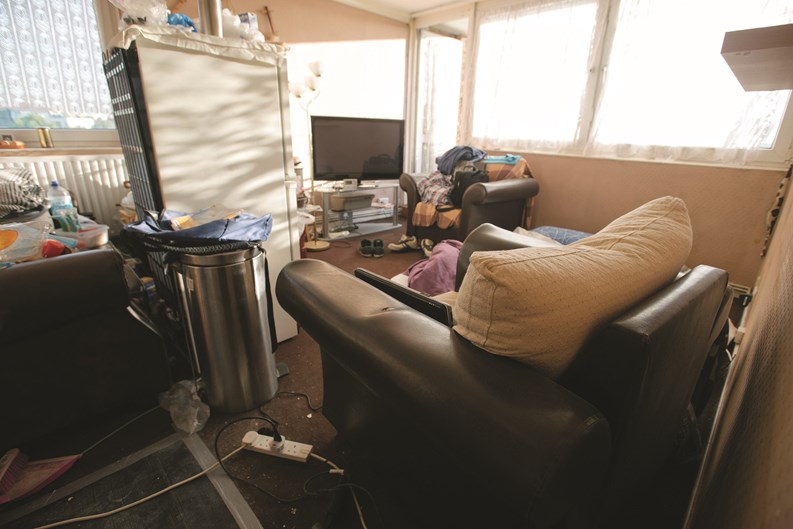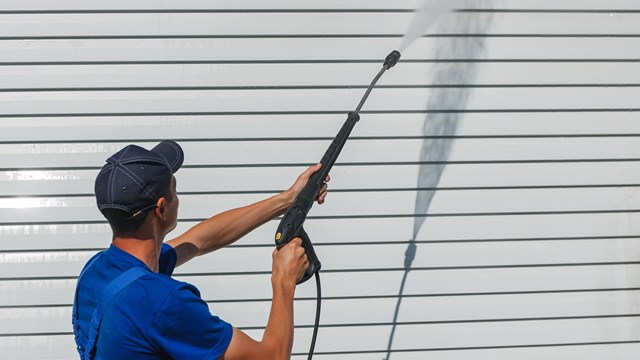Regardless of whether you're talking about a reputation, a design, or a lobby, the word clean implies an absence of dirt, germs, and unattractive clutter. If your home happens to be a condominium, a co-op, or other multi-unit building with common areas and a board of directors overseeing day-to-day operations, 'clean' should be a given—and there should be adequate systems and standards in place to maintain that cleanliness.
A Healthy Clean
Florence Nightingale, the mother of modern nursing, is credited with making the important connection between clean living conditions and health nearly two centuries ago. She writes, “The connection between health and the dwelling of the population is one of the most important that exists.”
History and science has only reinforced Nightingale’s keen observations. A healthy environment must be free of pollutants, contaminates and germs, and not just appear clean on the surface. How a property reaches and maintains a healthy state of cleanliness may vary, but the products and services available today are far superior to the basic soap and water from Nightingale’s era.
Current moves towards “green products,” have addressed the issues of keeping the world environment clean and free of contaminates and pollutants as well as just the space we occupy. As a result of education, environmental awareness and scientific advancements, an entire industry has developed with methods and products carefully designed to provide humans (and pets) a clean safe habitat.
Identify and Control
The National Center for Healthy Housing (NCHH) recommends controlling the sources of dirt and pollutants, creating smooth, easily cleanable surfaces, reducing clutter, and using effective cleaning methods. NCHH uses a simple guideline with eight well-defined principles to address the separate components of a healthy home environment. From Clean to Green this organizations addresses each potentially hazardous cleaning challenge and offers a simple, effective remedy.
The NCHH also operates the National Healthy Homes Training Center through a cooperative agreement with the U.S. Centers for Disease Control and Prevention and support from the U.S. Department of Housing and Urban Development (HUD) and the U.S. Environmental Protection Agency (EPA). The training center is available to effectively identify and address housing-related hazards.
Not surprisingly clutter and moisture are two of the identified problems affecting the cleanliness and safety of any environment. While clutter may not be considered a big deal in itself, it can mask or hide hazards such as dirt and pests. Clutter may also prevent leaks and moisture from being detected in a timely manner, and make falls and accidents more likely. Undetected leaks and standing water provide a supportive environment not only for pests, but also dreaded mold and mildew. Once mold or mildew gets a foothold, air quality can suffer and further damage the safety and health of the residents and staff.
Pests, such as insects, roaches, dust mites, and rodents, are always on the move searching for food, water, and shelter. Even the most spotless environment can experience a brush with pests. Treatment can be time consuming, expensive, and even toxic if the proper treatments are not used with the correct application: clearly prevention is the best approach.
Prevention
The NCHH recommends primary prevention (addressing these hazards before they become dangerous problems) as the first and best approach to providing a clean, healthy environment. “The ideal way to maintain healthy homes and properties is to practice primary prevention using a holistic approach—tackling many hazards at once to minimize threats from multiple hazards.”
Starting with basic primary measures can go a long way towards preventing larger problems. One example is to place ample trash and recycling receptacles in accessible locations throughout common areas. When management makes it easy and convenient to keep things clean and orderly, residents tend to do so with much more frequency.
There’s also the small details most people may not think about that can help stop dirt, grime, and weather from being tracked into the building. Something as simple as a welcome mat doesn’t just add a little folksy charm to a lobby, it serves an important function. Many buildings go further by putting a flooring system in place, in which porous mats can absorb all the dirt and slush brought in by residents from the front door to the elevator or stairs.
Carpets tend to hide dirt, while floors readily show all that is tracked in. It sounds a little anal retentive, but maintenance professionals have gotten cleaning and removing dirt down to a science. There’s the right products to use, like hydrogen peroxide-based products, particularly for a low-moisture carpet cleaning solution. Household products usually tend to be a little too weak for areas like the lobby, where foot traffic is heavy and constant.
Then there’s how often to clean. Many residents might simply assume that their maintenance crews give a decent mop to the floors after each night, but sometimes it’s more often. Dirt in common areas is very similar to dirty dishes. The longer you leave them in the sink to dry up, the longer and more labor intensive it is to clean them. Likewise, the more frequently buildings clean their mats and floors, the easier it is to remove all that dirt.
Of course in recent years, many Americans have become more conscious of potentially harmful chemicals in cleaning products. The custodial industry is no different, though many experts warn that environmentally friendly cleaning products have yet to catch up to traditional chemicals in effectiveness when it comes to big jobs found in high-traffic indoor spaces.
Prevention & Protection
Paul Bonn is a sales manager for Buffalo Grove-based Global Material Technologies (GMT), a firm that manufactures a wide array of steel wool and steel wool products for numerous markets worldwide. His personal focus is a line of fabrics, sweeps, sealers, solutions and levelers used to prevent and protect against rodent and insect infestations.
“We offer rodent-proof door sweeps, garage door seals and dock leveler seals,” he says. “For example, the Xcluder line is a permanent fix to all cracks, holes and crevices…once installed it is there permanently as it will never rust, corrode or fall out,” he says.
The line uses a combination of black poly and stainless fibers to seal hard-to-reach cracks and crevices and stop rodents and other pests from entering buildings or garages.
Most high-rises will have one or more loading docks. Gaps as large as an inch on each side of the doors are common even in newer buildings. The Xcluder Dock Leveler kits allow those spaces to be permanently sealed blocking out pest and sealing in peace of mind for staff and residents alike.
Two-Legged Pests
Sometimes the most serious offenders for bringing dirt and grime into the lobby, halls, and common areas are the very people who call the property home. According to Nick Sundberg, director of building services for ACM Community Management, Inc. in Downers Grove, teenagers always make the list, but so do renters and anyone moving in or out, or accepting frequent deliveries. “Some of the properties we provide on-site maintenance for, require the maintenance engineer to monitor and document all move ins-and-move outs,” states Sundberg.
Alan Pearlstein, a senior property manager with FirstService Residential agrees with Sundberg on the biggest offenders. “When it comes to dirtying up the hallways, lobbies, and common areas, the biggest offenders are the delivery and moving companies, dog owners, and tenants,” he states.
Keeping up with the grime, who does what, when and where may well depend on the size of the building, and the amount of staff available. For larger properties, Pearlstein states the porters will take charge of several floors, and everyone will be responsible for the overall building. Sundberg works with a range of full time on-site maintenance and janitorial staff for larger properties, and weekly arrangements for the smaller ones. “It varies to the properties’ needs and budget,” he states.
The variety of surfaces, with different products and methods needed to keep everything sparking in a busy building, can present an ever-present challenge for any size staff. Ott, Sundberg, and Pearlstein all agree there is no one simple answer. Regular maintenance, open lines of communication with building staff and suppliers and spending time on property are all effective steps to keeping things clean, with a controlled budget. They all deal with carpet, tile, hardwoods, paint, wallpaper, dry walls, and laminate on a regular basis.
Sundberg recommends weekly general cleaning and touchups for drywall and tile. Carpets should be vacuumed a minimum of weekly and spot cleaned as needed, with semi-annual to quarterly power cleaning. Hardwoods should be cleaned weekly with wood specific products and refinished as traffic demands.
Pearlstein immediately addresses issues when they arise. He has had manufacturing representatives give on-site demonstrations for equipment and products so the staff is both comfortable and knowledgeable when changes are made. He recently faced an unusual painting challenge that called for creative measures. When water from a storm entered a lobby and damaged a mural, Pearlstein’s company hired a local artist to make the repairs. The mural was restored to its former beauty, and the property realized a savings of several thousand dollars— definitely a happy ending and a creative win-win for everyone involved!
As always, it’s important to take advantage of any and all education materials available. Go online, check local colleges, and/or union training, and don’t forget to talk with other properties or read trade journals, like The Chicagoland Cooperator. Something as simple as cleaning may seem cut and dry, but you never know when a new method or product changes everything.
Anne Childers is a freelance writer and a frequent contributor to The Chicagoland Cooperator.







Leave a Comment